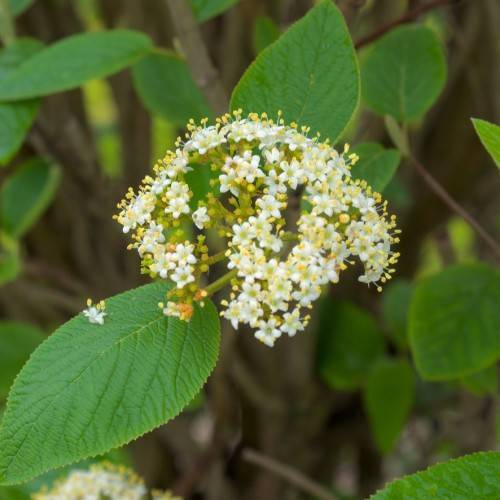
lantanaphyllum viburnum
Viburnum rhytidophylloides
Cycle:
Perennial
Watering:
Average
Hardiness Zone:
5 - 8
Flowers:
Flowers
Sun:
Full sun,part shade
Fruits:
Fruits Ready In Fall
Leaf:
Yes
Growth Rate:
Low
Maintenance:
Moderate
Salt Tolerant:
Yes
Care Level:
Medium
watering
Water Viburnum rhytidophylloides deeply about 1 to 2 times a week, providing at least 1 inch of water each time. Aim to apply water to the root zone only, avoiding wetting of foliage if possible. At times during the hot summer months, the plant may require more frequent watering, especially if soil moisture is depleted quickly. Avoid over-watering this species since it can lead to root rot. Once established, this species is somewhat drought-tolerant.
sunlight
The Lantanaphyllum viburnum (Viburnum rhytidophylloides) is an evergreen shrub that thrives in full sun to partial shade. This plant species prefers 6 to 8 hours of direct sunlight each day, but can easily adapt to partial sun conditions. It is important to ensure that the plant gets some direct sunlight for the foliage to remain glossy and for bloom production. During the winter months, the plant may require less sunlight, so if it is in a particularly shady area, it is best to move it to a brighter spot.
pruning
Pruning lantanaphyllum viburnum (Viburnum rhytidophylloides) should be done on a yearly basis to promote healthy growth and a bushy plant. The best time of year to prune this plant is in late winter or early spring, once the danger of frost is past and before the plant starts growing anew. Start by assessing your shrub and removing any dead or damaged branches. Prune by removing 1-third to 1-half of the older wood. Make sure to leave some of the older branches on the plant, since this will create a stronger, more resistant framework. Thinning out the branches will also help lantanaphyllum viburnum to maintain a desirable shape and size, as well as help them to produce more flowers and fruit. When pruning lantanaphyllum viburnum, it is important to use sharp pruning shears or clippers to avoid ragged edges, which can invite pests. Finally, apply a layer of mulch or compost after pruning to give your shrub the nutrients it needs to grow healthy and strong.
